I promised that the next time I had a purifier in bits I would get some photos, so here they are. This is actually a lube oil purifier, not fuel oil - but they are identical with the exception of a few settings on the control system and the size of the gravity discs. This keeps the lube oil sufficiently clean for it not need to be changed - only ever topped up. We'd only change it if the oil is chemically degraded - something which rarely happens on this vessel as we're burning low sulphur diesel.
A purifier is essentially the mutt's nuts of filters. They'll remove solid particles as well as separate liquids of two differing densities (normally oil+water). They were originally invented for the dairy industry - for separating cream and milk but have evolved somewhat since. I hope you can see the relevance to us biodiesellers - having one of these on a settling tank would greatly simplify things!
This is an Alfa Laval unit - part of the MMPX series. They are self discharging - meaning that at periodic intervals the bowl opens and discharges the particulate matter into a tank before starting the process again. The only time it's opened is either for planned maintenance or when it breaks down (as this unit has recently done).
The bowl spins at just under 10k rpm and the feed rate is about 2000 litres per hour.
Information on operation can be found here:
http://www.marineengineering.org.uk/ (scroll down on the left to purifiers)
I'm actually building this up in this sequence of shots (which is why it's so clean), but for clarity of explanation the order is reversed.
So, the unit itself. The feed on the top is for sealing water, the product in pipe is hidden at the back, and the one to the left is the purified discharge. There are other pipes as well for operating water (opening and closing the bowl) that are at the bottom of the unit. The fat one is the sludge discharge, and the one behind it is the water discharge.
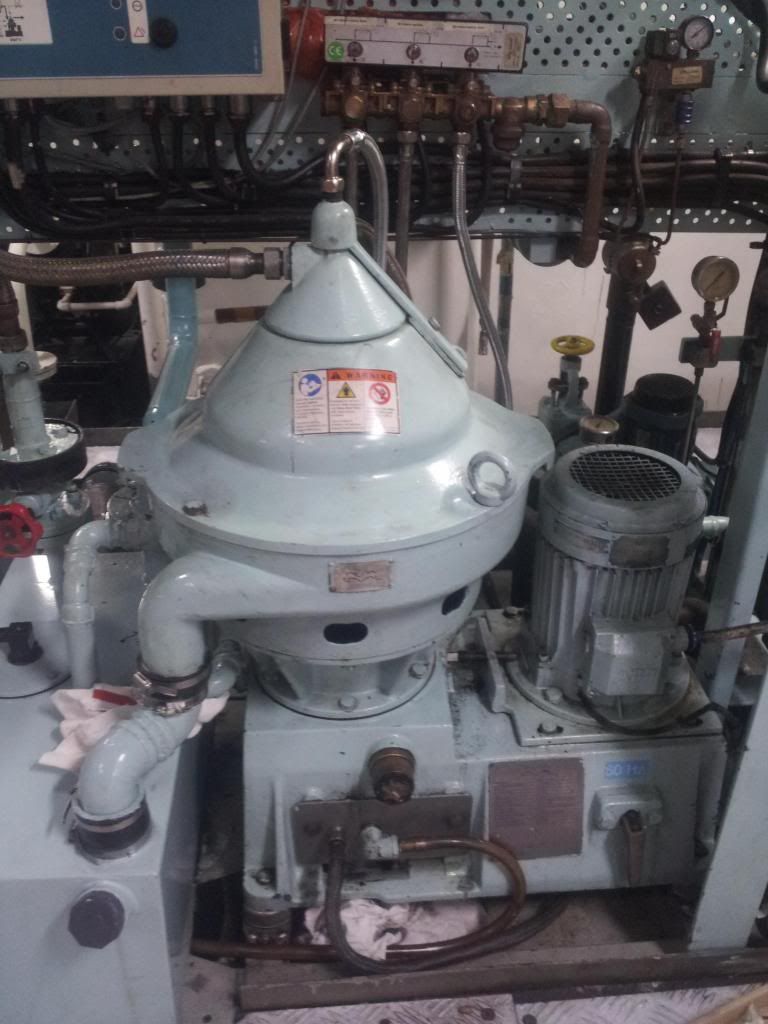
With the hood removed. The stainless bit is the bowl - all the red stuff is stationary. You can see the sludge ports in the side - these are normally closed in operation and open from time to time to discharge all the sludge into a sludge tank. The spindle in the middle is what the product is fed in through. It's hollow all the way to the bottom so that the product is introduced to the bottom of the distributor before making it's way back up through the disc stack. It also holds an impeller for discharging the cleaned product on the outer surface.

Gravity disc removed. The brass housing at the top is the outer section of the discharge pump.

And the gravity disc itself - this is what sets the discharge point between the two phases of oil and water. These come in various guises depending on the manufacturer. Alfa Laval have evidently chosen a cone shape for this one. The Westfalia units I've played with in the past use a giant washer.
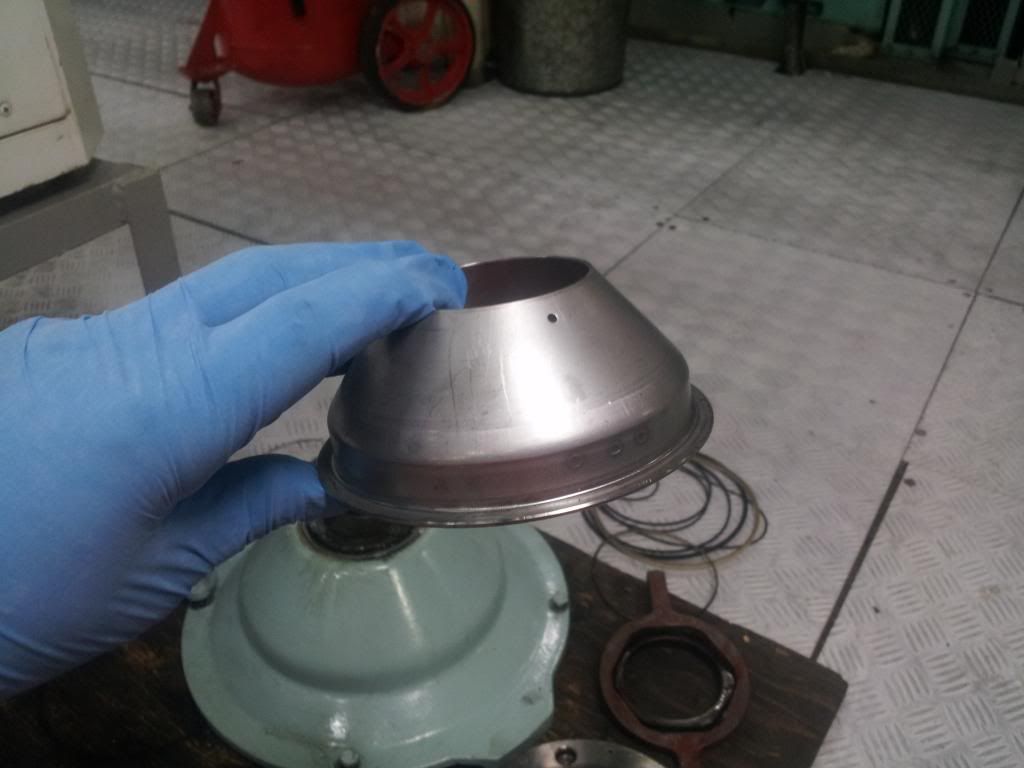
Bowl top removed. You can see the top of the disc stack.
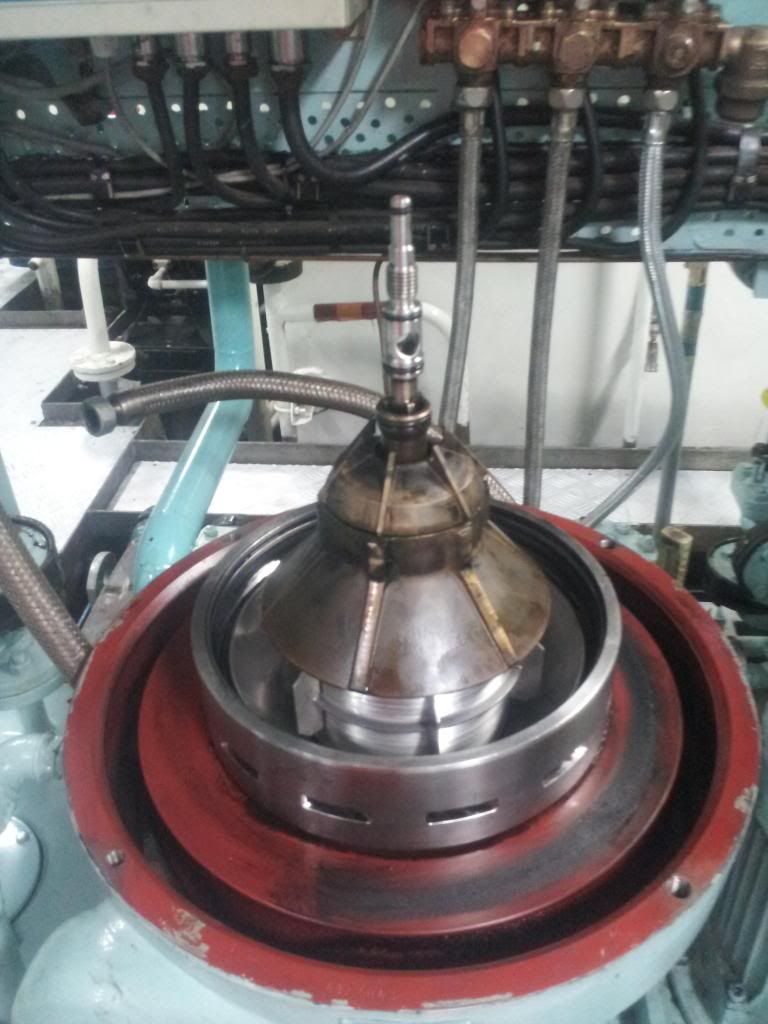
Disc stack top and spindle removed. The wings ensure that the product is rotating with the bowl. The holes in the discs allow movement of the product/water between adjacent discs.
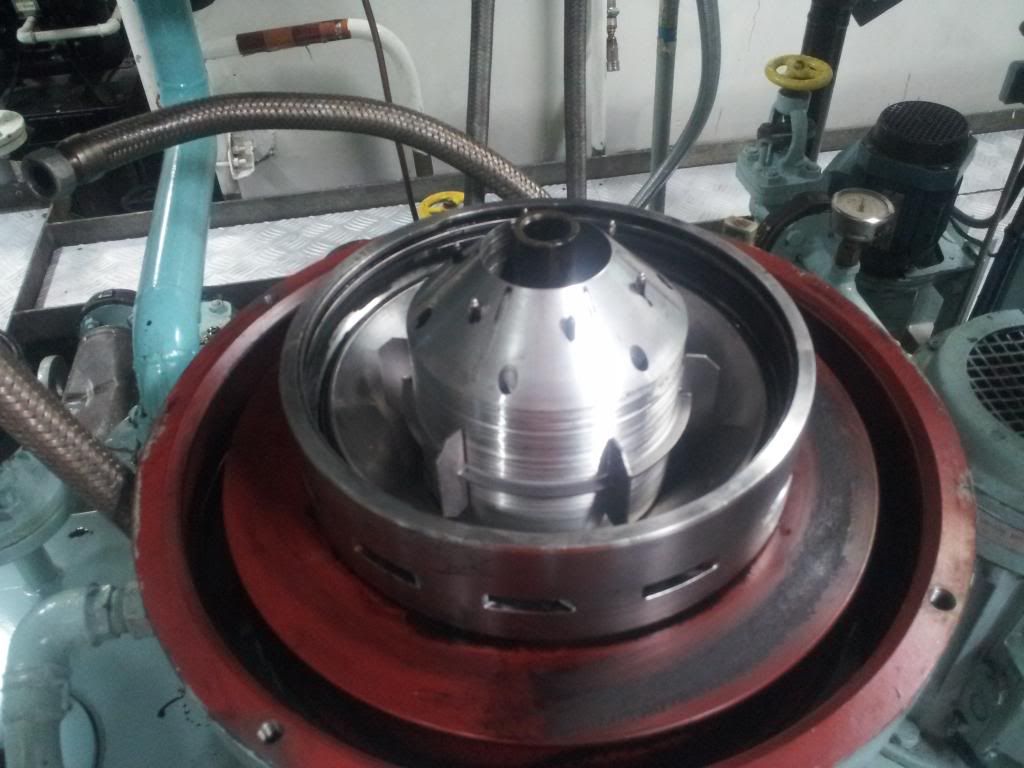
Removed disc stack, discharge pump, spindle and gravity disc assembly.
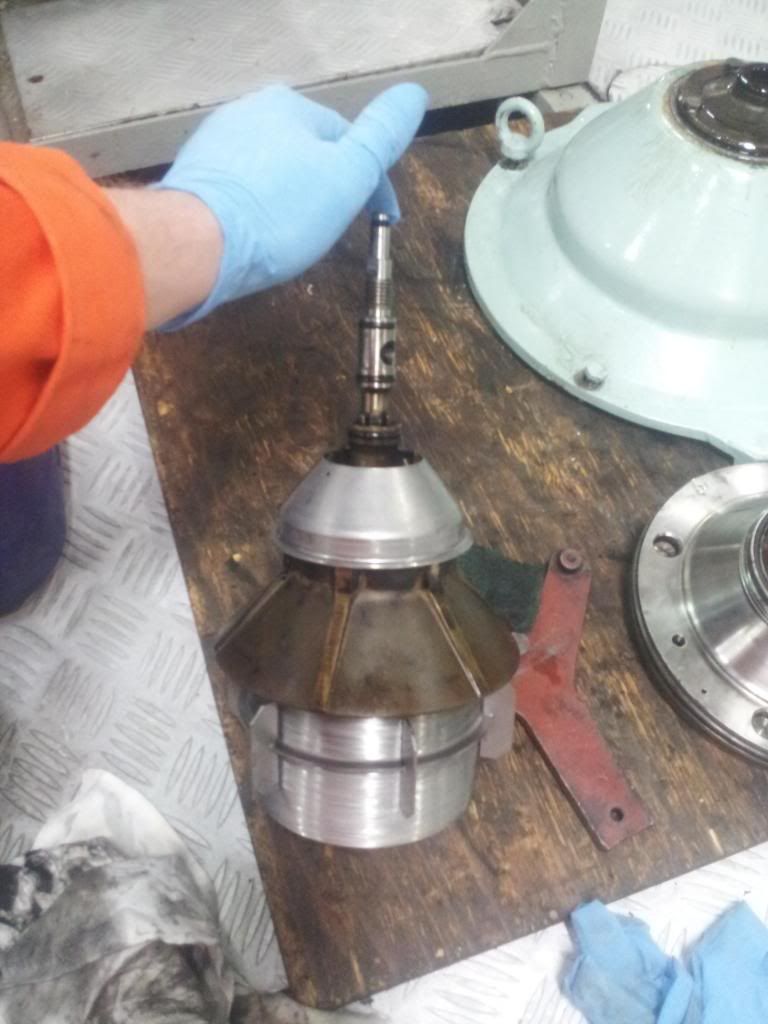
A single disc. Each one is cleaned and inspected closely. They've spent about 12 hours sitting in a vat of acid prior to being washed in diesel and finally wiped with a rag. There are about 85 of them (despite counting them several times today, I've forgotten the exact number!)
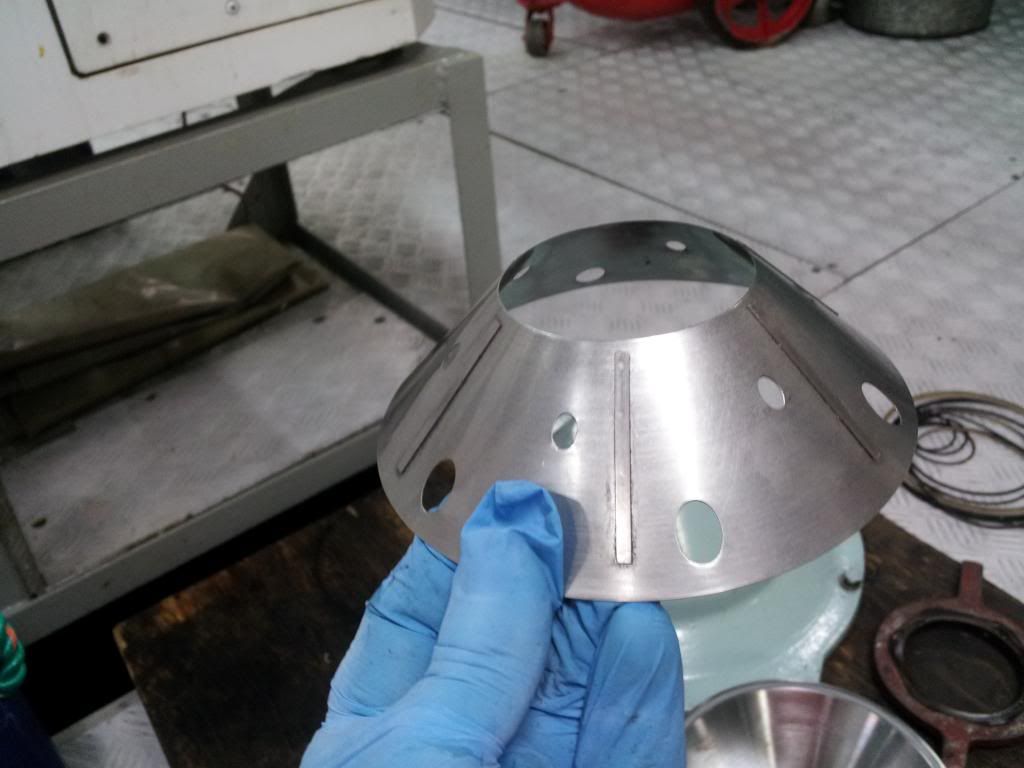
Sliding piston. This moves up and down in the bowl to open/close the sludge ports in the side. (1.6MW alternator in the background.

)
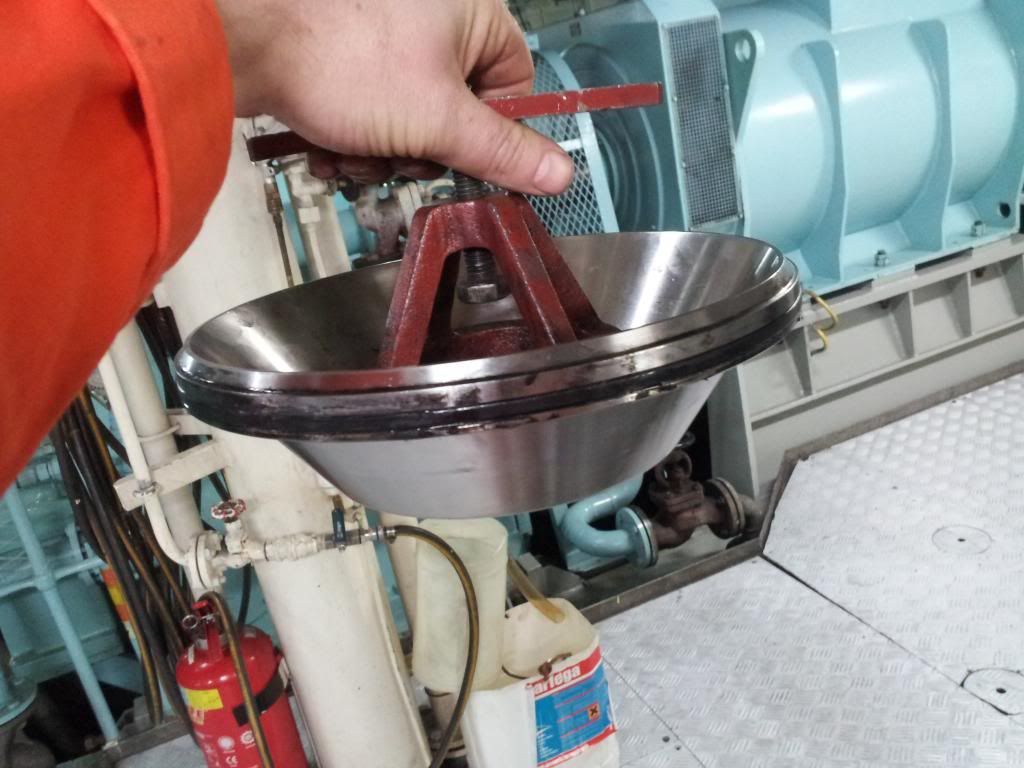
Operating water nozzles/ports. This pushes the sliding piston using water supplied externally.

I hope that's of some interest to some people on here. I'm sure this is how the big boys would ensure that their biodiesel is devoid of water/particulates - it would be how I'd do it too if I had the budget. That said - I do have a small milk purifier at home from the 1940s. It's a simple hand crank job and I do wonder how it'd handle bio.